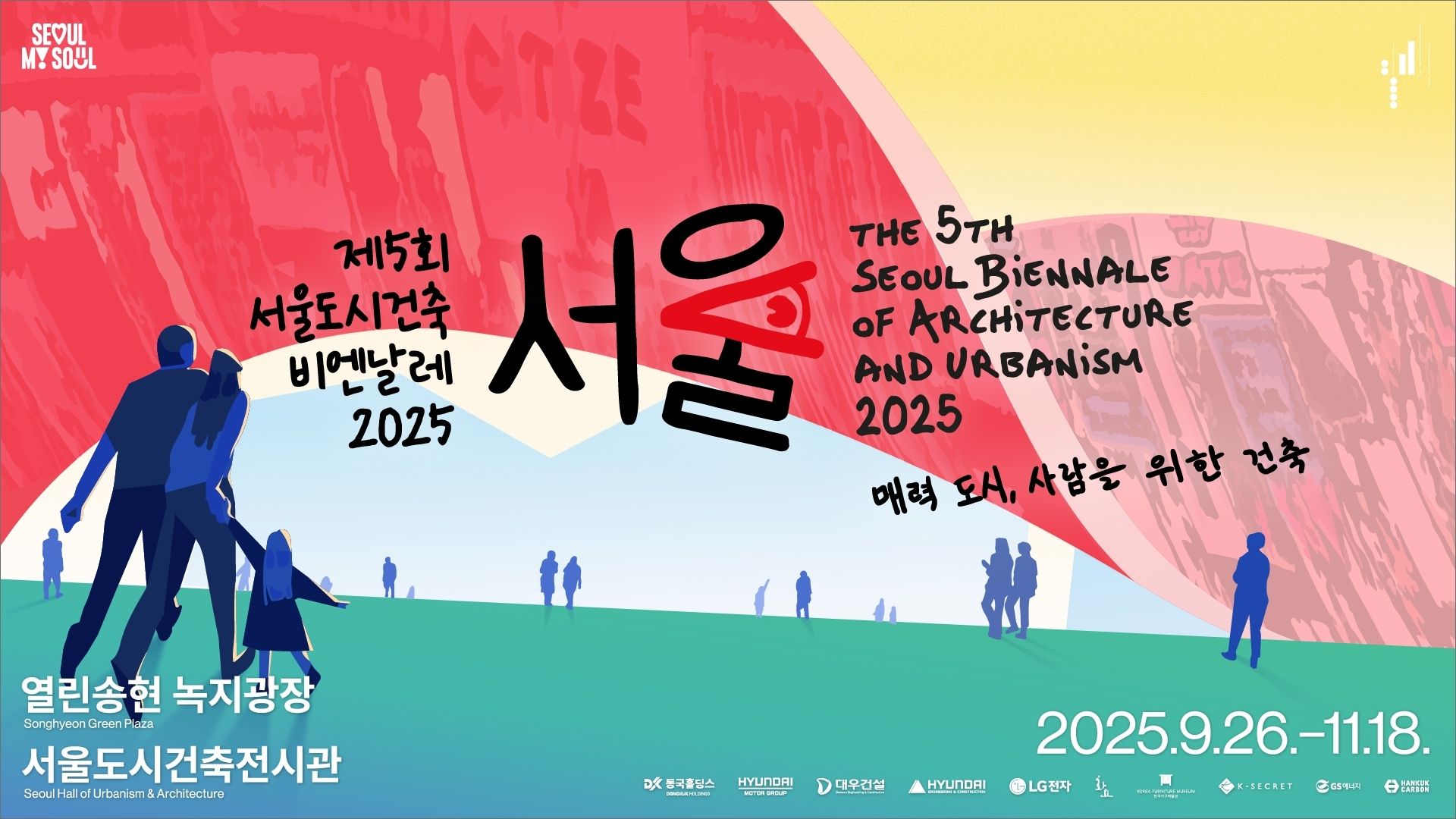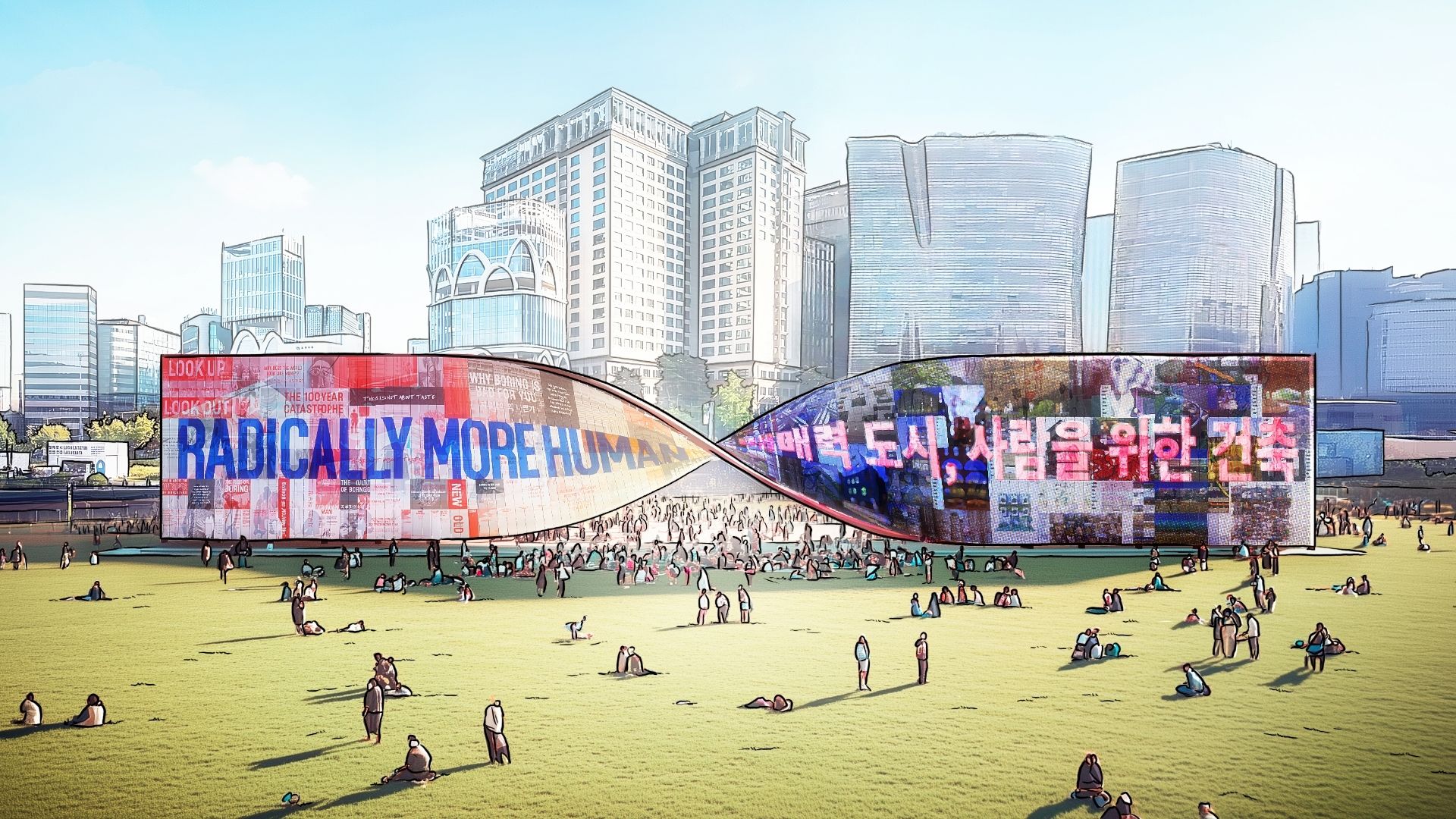- UGREEN
- Posts
- SBAU 2025, UGREEN, Architecture of Silence
SBAU 2025, UGREEN, Architecture of Silence
Your UGREEN News is live!

News
Radically More Human: Seoul Launches a New Era for Urbanism

Credits: SBAU 2025
Seoul (South Korea), September 26, 2025 — The 5th edition of the Seoul Biennale of Architecture and Urbanism (SBAU 2025) has opened with a bold vision: to make cities “radically more human”. Curated by the British designer Thomas Heatherwick, the event invites the world to rethink architecture as a tool for emotional well-being and public health.
Under the theme “Radically More Human”, the Biennale brings together architects, neuroscientists, artists, policymakers, and citizens in an interdisciplinary effort to confront what Heatherwick calls the “blandemic” — a global epidemic of monotonous, generic, and emotionally lifeless buildings.
“Cities filled with soulless buildings create boredom, isolation, and disconnection. That has a real impact on the human brain.”
Human-Centered Cities as Public Policy
Running from September 26 to November 18, SBAU 2025 takes place in two key venues in Seoul: Songhyeon Green Plaza and the Seoul Architecture and Urbanism Exhibition Hall. Organized by the Seoul Metropolitan Government’s Division of Future Urban Spaces Planning, the initiative signals that the vision goes beyond aesthetics — it’s shaping public policy at both municipal and global scales.
By choosing open and accessible spaces, the Biennale aims to engage not only architects but also residents, policymakers, and real estate players. Its goal is clear: to drive a structural shift in how we define urban success.
Architecture as an Emotional Manifesto
At the heart of the exhibition stands the Humanise Wall — a 90-meter-long, 16-meter-high structure twisting like a portal. This installation features façades from 38 countries, visually expressing the Biennale’s purpose: to humanize building exteriors.
Adjacent to it, 24 experimental façades, each 4.8 meters tall, were built as physical prototypes of large-scale emotional architecture. Participants include Kengo Kuma, Kéré Architecture, Stella McCartney, Yinka Shonibare, and chef Edward Lee, highlighting the event’s deeply interdisciplinary nature.

Credits: SBAU 2025
“Architecture has become a hostage of functionality. We need to bring texture, identity, and emotion back to our cities.”
Science Confirms: Architecture Shapes the Brain
SBAU 2025 goes beyond aesthetic intuition by incorporating neuroscience into its curatorial framework. Researcher Cleo Valentine (University of Cambridge & Yonsei University) presented a study using quantitative EEG (qEEG) to analyze how the brain responds to different types of façades.
The main finding: biophilic designs — those inspired by natural forms — reduce brain activity associated with stress and inflammation. The study provides empirical evidence that the visual quality of cities is a matter of public health.
Additionally, Professor Rebecca Madgin (University of Glasgow) introduced methods to measure emotional attachment to buildings, arguing that affective value should be considered in urban planning and heritage preservation.
Artificial Intelligence Serving Urban Empathy
In the digital exhibition “Emotionally Yours, Seoul,” people around the world were invited to submit a photo of a building along with a short description of the feeling it evokes. An AI system processes the submissions and turns them into an interactive mural of urban emotions, which reacts to visitors’ movements.
The project transforms architectural critique into a collective emotional experience, creating the world’s first Urban Sentiment Index — an unprecedented tool for urban planners seeking to understand how people truly live and feel their cities.
Emotional Sustainability: Buildings That Last 1,000 Years
SBAU 2025 introduces a new layer to the concept of sustainability: fighting emotional obsolescence. According to Heatherwick, many buildings are demolished not because they fail structurally, but because they were never loved.
“Buildings that no one loves are disposable. Those that are loved can last for centuries.”
This idea gives rise to the concept of “1,000-Year Buildings” — designs meant to foster emotional connection and sustainable adaptability. The approach also carries economic implications: emotionally valued buildings are more durable, reduce financial risk, and generate long-term worth.
A New Generation of Sustainable Cities
By uniting science, art, technology, and policy, SBAU 2025 positions Seoul as a global leader in emotionally intelligent urbanism. The city isn’t just embracing the Fourth Industrial Revolution — it’s redefining what the cities of the future should be: human, sensory, and resilient.
At a time of major climatic, social, and technological transformations, the Biennale delivers both a warning and an invitation:
True sustainability begins with what we can love — and preserve
UGREEN
This is your chance to create real impact through learning
Have you ever considered how architecture and construction can positively impact the planet and the lives of people?
UGREEN has gathered over 30 complete courses that explore exactly that universe — sustainability, urbanism, innovation, and design practices that truly make a difference.
You can learn at your own pace while also joining an initiative that donates 10% of profits to social impact projects, helping build a better future.
It’s your opportunity to expand your knowledge, spark new ideas, and discover innovative ways to design for change!
Opinion
The Architecture of Silence: Noise Is the New Invisible Pollution in Our Cities

Credits: EnvironBuzz Magazine
The noise of urban life — horns, engines, sirens, construction — has now surpassed water pollution as one of the greatest threats to human well-being, according to the World Health Organization (WHO). That’s right. What many of us no longer even notice, simply because we’ve become used to it, is silently and invisibly making us sick.
Experts call this “compliance fatigue”: we hear so much noise every day that it becomes part of the background. But that doesn’t mean our bodies are immune. On the contrary, they react even while we sleep, maintaining high levels of stress without us realizing it.
Can noise kill? Yes. And the data is clear
Studies show that living in noisy areas increases the risk of cardiovascular diseases such as heart attacks, strokes, and hypertension. And we’re not talking about deafening sounds — a chronic increase of just 10 decibels can raise those risks by more than 3%.
A long-term Harvard University study followed over 100,000 people for 30 years and confirmed: even small increases in environmental noise are linked to serious health problems.
This turns urban sound control into a public health issue, not just a matter of comfort.
Children learn less in noisy environments
The impact doesn’t stop there. Excessive noise in schools impairs learning, concentration, and cognitive development. That student struggling to focus might just be trying to hear the teacher over the traffic outside.
In Brazil, the legal noise limit for classrooms is 50 decibels, while the WHO recommends under 35 dB. The difference may seem small, but it represents a sound nearly twice as loud — enough to permanently affect learning in noisy urban areas.
Silence as an urban sustainability strategy
Here comes a powerful concept: The Architecture of Silence.
It proposes a shift from traditional “acoustic engineering.” It’s not just about blocking sound, but about designing spaces where silence is intentional — a form of comfort that goes beyond aesthetics or ergonomics. It’s a new way to think about urban well-being.
Silence is sustainability.
Silence is inclusion.
Silence is health.
Imagine a home oriented toward a garden instead of a busy street.
A building using porous materials to absorb sound.
A school with an insulated façade and an internal courtyard.
All of this is already possible — and necessary.
In conclusion
Silence is health. Designing with silence in mind is an act of responsibility.
Noise pollution is no longer an invisible nuisance — it’s a measurable, real threat to public health. Ignoring it in urban planning and architecture means accepting, even indirectly, its consequences: insomnia, chronic stress, cardiovascular disease, reduced academic performance, and social exclusion.
Silence is not the absence of sound, but the presence of care — care for those who live, study, and work in the spaces we design. The Architecture of Silence calls for just that: putting well-being at the center, from the layout of streets to the smallest architectural details.
There are no quick fixes — and perhaps that’s the point. Building quieter cities demands technical awareness, bold decisions, and public policies that treat noise as an environmental priority.
If we truly want to build a sustainable future, we must listen less to the noise — and more to the data, the science, and, above all, the people.
Reply